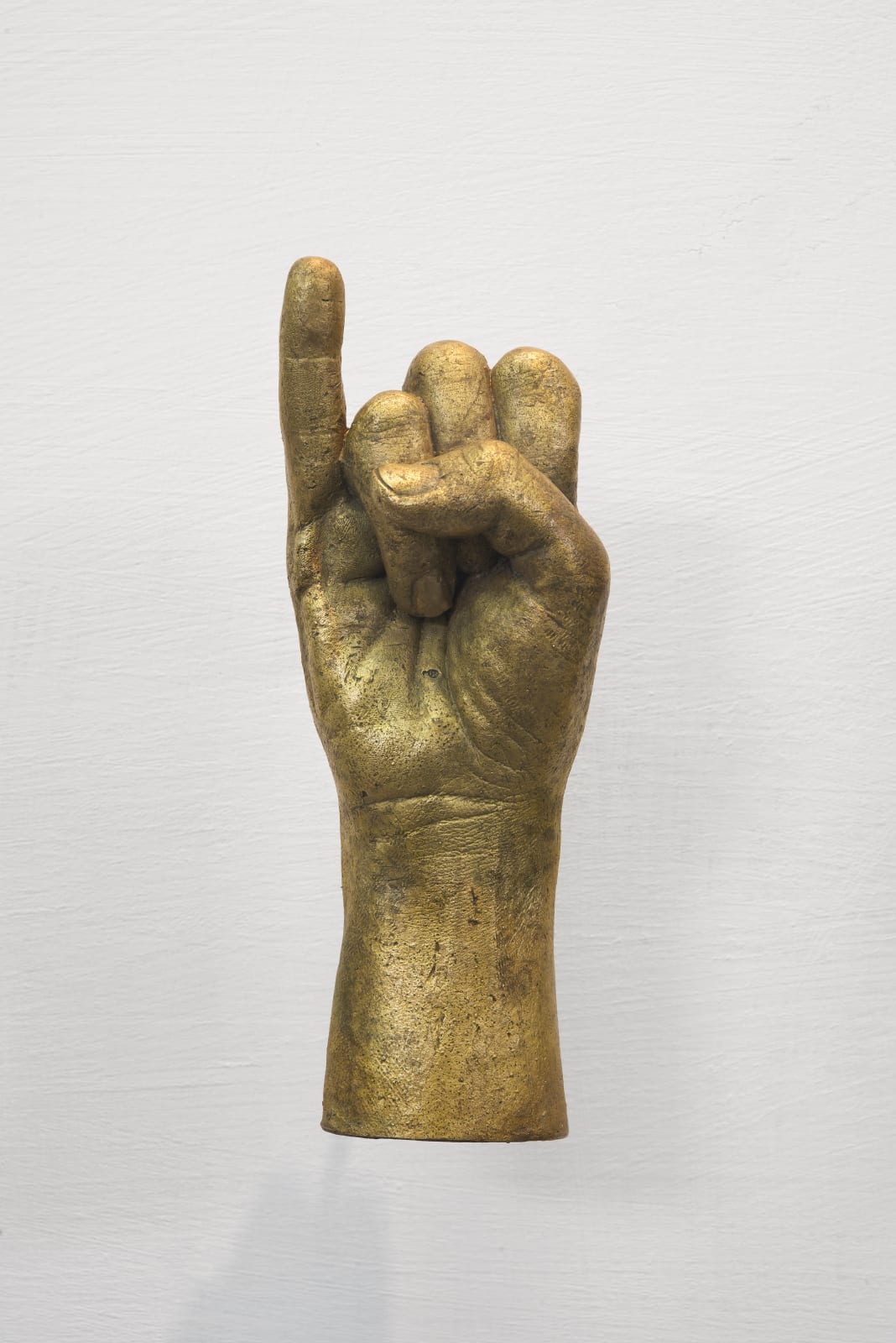




Yoan Capote Cuban, 1977
Further images
In Abstinencia (Disentir) (2022), Cuban artist Yoan Capote explores the profound, often stifling limitations placed on self-expression within society. The sculpture, a compelling assemblage of cast bronze hands arranged to spell out the word “Disentir” (“Dissent”) in deaf-mute sign language, captures the universal yearning to speak out against oppression. This silent proclamation of resistance is a continuation of Capote’s Abstinencia series, where he uses physical silence to symbolise social and political silencing. Through these hands, Capote confronts viewers with the ironies and restrictions imposed on individuals in their pursuit of truth and justice, emphasising the limitations on personal and political agency that endure in both visible and invisible forms.
The Abstinencia series, to which this piece belongs, represents various themes critical to the contemporary human experience, with words like “Libertad” (Liberty), “Democracia” (Democracy), and “Religión” (Religion) appearing in previous works. Each word selected by Capote speaks to the human quest for freedom, autonomy, and voice in the face of systemic barriers. The choice of “Disentir” for this piece is significant; while the word embodies the fundamental right to voice divergent opinions, the hand gestures in sign language communicate in silence, underscoring the paradox of muted protest in an environment hostile to dissent. Capote’s cast hands, rendered in an expressive realism, are both powerful and eerily restrained, evoking the dignity and frustration of those who remain voiceless in the face of oppression.
Capote’s exploration of language as both a tool for and a restriction on communication dates back to Abstinencia (Politica) (2011), an earlier work that examined the suppressed avenues for political expression in Cuba. By using deaf-mute sign language in his work, Capote illuminates the constraints of state control over speech and thought, addressing the very real limitations on human rights that prevail in his home country and many parts of the world. Each cast hand in Disentir represents not only an individual who remains anonymous and unheard but a universal struggle against the silence imposed on marginalised communities. The artist’s careful attention to detail in each hand’s unique form reinforces this message, allowing viewers to imagine the identities and experiences behind each gesture and to feel the weight of collective frustration.
One of Cuba’s most innovative artists, Capote has built a reputation for work that delves deeply into the human experience, especially themes of freedom, migration, and expression. His sign-language works are often displayed with an accompanying code that enables viewers to decode the intended word, bridging the gap between silence and understanding, secrecy and revelation. In doing so, Capote engages the audience in an active process of discovery and empathy, inviting them to decode the silent messages and feel the yearning for a voice that resonates through his cast figures. His 2014 work Abstinencia (Libertad), for instance, reflects on the theme of liberty through the hands of anonymous migrant workers spelling out “Libertad.” Conceived after a visit to New York City’s Statue of Liberty, this piece speaks to the enduring struggles faced by migrants seeking freedom and agency – a stark reminder of the complex relationship between promised freedoms and lived realities.
Through Abstinencia (Disentir), Capote once again draws viewers into a profound meditation on societal constraints and human resilience. Like much of his work, this sculpture balances the beauty and power of silent expression with the tragic irony of enforced silence. Capote’s use of sign language as a visual and conceptual medium underscores his belief in the universal desire for self-expression, even when faced with silencing forces. Abstinencia (Disentir) stands as a testament to the resilience of the human spirit, transforming the silent gestures of anonymous hands into a powerful statement of defiance, and making an unspoken plea for a world in which the right to dissent is as natural and unrestricted as the right to speak.




